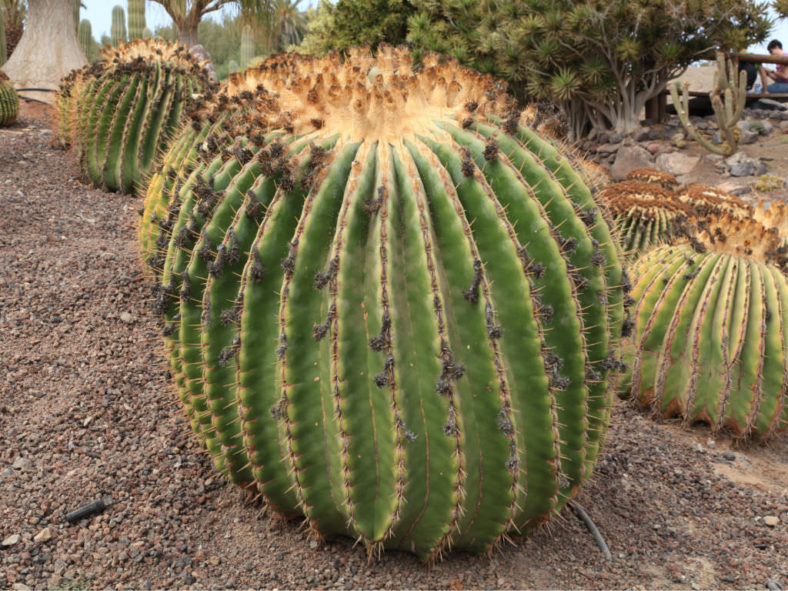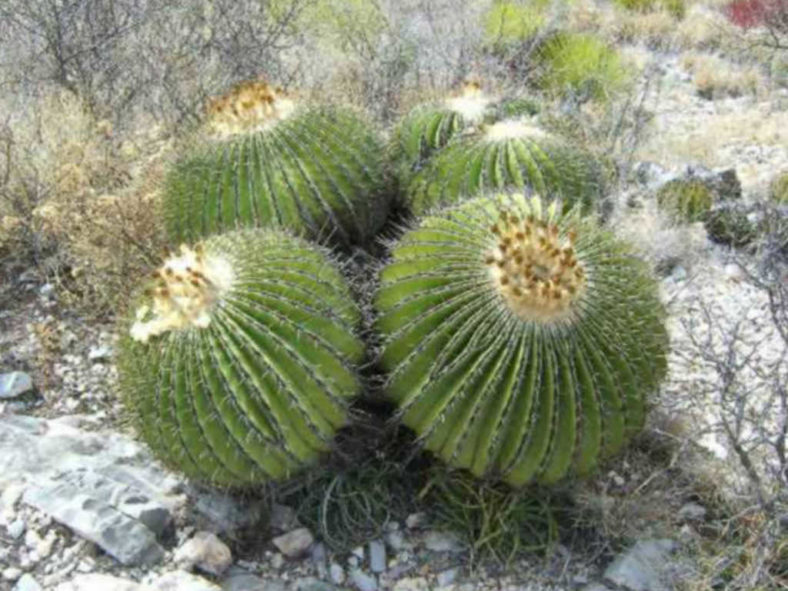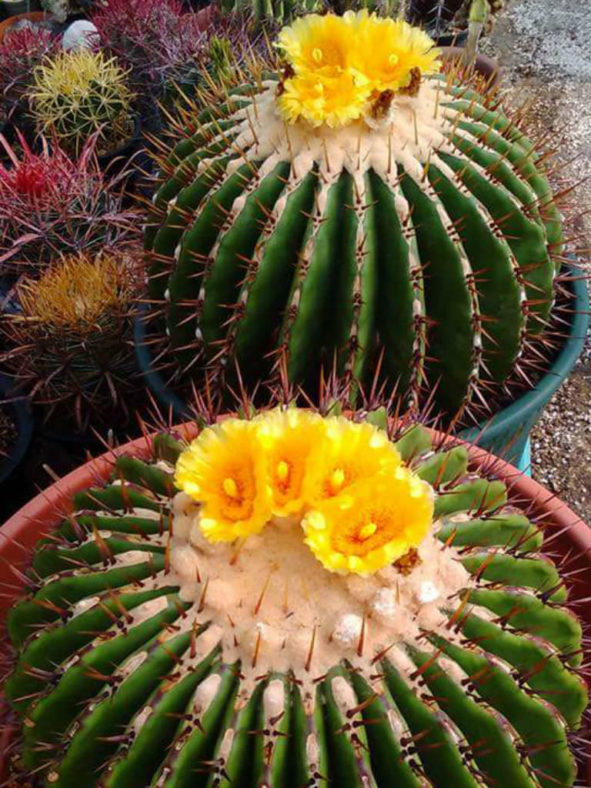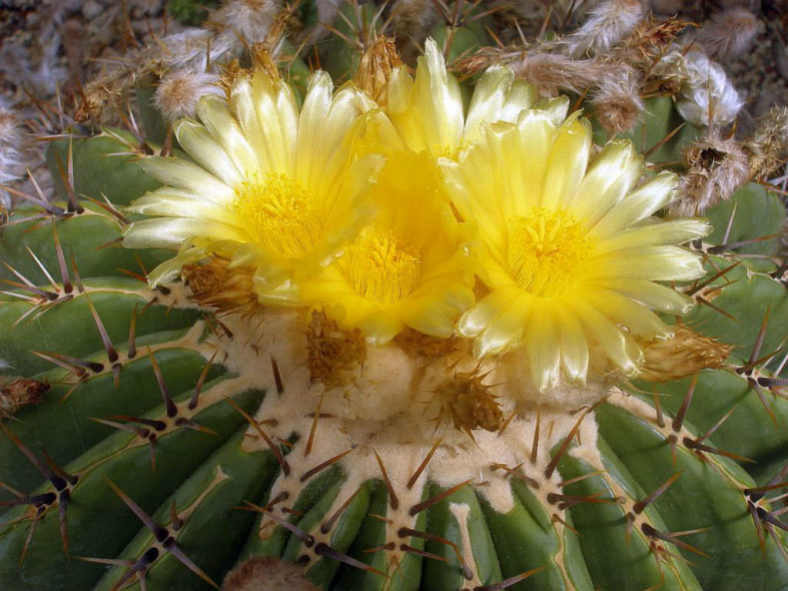Scientific Name
Echinocactus platyacanthus Link & Otto
Common Name(s)
Giant Barrel Cactus, Giant Viznaga, Large Barrel Cactus
Synonym(s)
Echinocactus ingens
Scientific Classification
Family: Cactaceae
Subfamily: Cactoideae
Tribe: Cacteae
Genus: Echinocactus
Origin
Echinocactus platyacanthus is native to Mexico. It grows in semi-arid vegetation from Nuevo León to Oaxaca.
Description
Echinocactus platyacanthus is a slow-growing barrel cactus with a heavily ribbed, usually solitary, green to glaucous stem with ribs lined with clusters of long stiff spines. It can live for over 100 years. The stem initially has 5 to 20, later up to 60 ribs, and can grow up to 8.2 feet (2.5 m) tall and 5 feet (1.5 m) in diameter. The apex of the stem is flat and covered with a yellow felt-like substance. The spines are spreading, somewhat flattened, yellowish to reddish or brownish, and become greyish or blackish with age. Each areole bears 3 to 10 straight radial spines measuring up to 1.6 inches (4 cm) long and 3 to 4 somewhat curved central spines measuring up to 4 inches (10 cm) long.
The vivid yellow, funnel-shaped flowers are diurnal and appear in late spring and summer, sometimes in fall. They can reach up to 2.4 inches (6 cm) in length and 3.2 inches (8 cm) in diameter. The fruits are yellowish, oblong to club-shaped, and can grow up to 3.2 inches (8 cm) long and 1 inch (2.5 cm) in diameter.

Hardiness
USDA hardiness zones 9b to 11b: from 25 °F (−3.9 °C) to 50 °F (+10 °C).
How to Grow and Care
These cacti do best in a sunny window, perhaps a southern exposure. Plants that do not get enough sunlight will grow more slowly and fail to thrive.
It is critical never to let these cacti be exposed to prolonged periods in water or even very high humidity. They will suffer from rot in the presence of humidity.
Echinocactus are vulnerable to pests, including aphids, mealybugs, scale, and whiteflies. Identify the infestation as early as possible and treat it with the leave-toxic option.
It is best to repot at the beginning of the growing season or summer. To repot a cactus, ensure the soil is dry before repotting, then gently remove the pot. Knock away the old soil from the roots, removing any rotted or dead roots.
Learn more at How to Grow and Care for Echinocactus.
Links
- Back to genus Echinocactus
- Succupedia: Browse succulents by Scientific Name, Common Name, Genus, Family, USDA Hardiness Zone, Origin, or cacti by Genus
Photo Gallery
Click on a photo to see a larger version.


